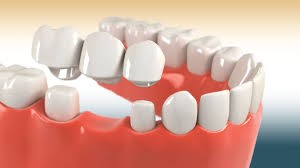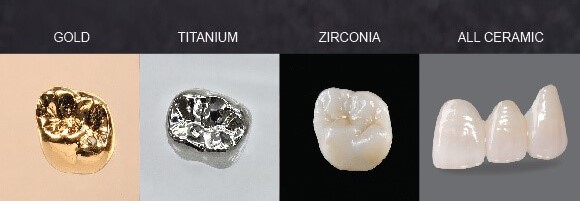Crowns & Bridges
- Home
- Treatments
Just like artificial limbs help individuals to perform daily chores with relative ease, Bridges and crowns are prosthetic devices that have been cemented onto the existing teeth, by a dentist or prosthodontist.

What is a Crown and a Bridge?
The Crowns have been used most popularly to cover up or “cap” totally a damaged tooth or cover an implant. Other than strengthening a damaged tooth, the crown can also be used to enhance the appearance, shape, or alignment.
A bridge, on the other hand, is recommended if the patient is missing out on one or more teeth. Bridges are generally used to replace single or multiple missing teeth. They span the area wherein the teeth are missing. The bridges are attached to the natural teeth or implants with the help of cement in the area surrounding the space.
Benefits of Crowns and Bridges
A dentist may recommend a crown or bridge to:
- Replace a large filling at a time while there is not enough tooth left
- Attach a bridge
- Cover a dental implant
- Save a weak tooth from causing a fracture
- Restore a fractured tooth
- Protect a tooth which has undergone root canal treatment
- Cover up a poorly shaped tooth
- Cover up the gaps that are created by missing teeth,
- Provide a tooth-like shape on top of an implant and provide the appropriate structure for normal oral function.
Types of Bridges

There are different types of bridges and Crowns that are available. Depending on the situation and the cost, the dentist may be in a position to provide the correct suggestion. Some of the popular options for bridges and Crowns are as follows
- Traditional Bridges
Traditional dental bridges consist of porcelain fused to metal, ceramic, or all-metal like gold. Such kind of bridges has a fake tooth, known as a pontic, which the dental crown clamps in place on either side.
- Cantilever Bridges
These are similar to traditional bridges. They are made of porcelain fused to the metal. To use a cantilever dental bridge, the dental crown (artificial tooth) is kept over an unhealthy tooth on either side.
- Maryland Bridges
Also called adhesive bridges, these are less invasive in comparison to the traditional dental bridges. It consists of a pontic (fake tooth) which is aided by a metal framework.
- Implant-Supported Bridges
Implant-supported bridges are supported entirely by dental implants, instead of a metal framework or dental crowns. This type of bridge is typically used to restore teeth, such as premolars and molars.
Types of crowns

- Gold crowns
Gold crowns are a combination of copper and other metals, like nickel or chromium. The primary advantage of these crowns is their durability.
- All Porcelain Crowns
This is one of the most popular types of crown used. They are completely made from porcelain material.
- Porcelain Fused-to-Metal Crowns (PFM)
The Porcelain-fused-to-metal (PFM) crowns are also widely used. They offer strength as well as aesthetics.
- Zirconia Crowns
Zirconium is a comparatively new material that blends the strength of metal along with the aesthetics of the porcelain crowns. The High translucent zirconia and the layered zirconia crowns are considered to be more popular options selected lately.
- E MAX: Lithium Disilicate Crowns
The latest kind of crown is known as E -Max. It is a kind of all-ceramic crown built by using lithium disilicate (a material that is light and thin).
FAQs
On average, the dental crowns have a life of around 5 and 15 years depending on the type of crown used. The life of a crown also rely on the “wear and tear” the crown is exposed to, how well a patient follows oral hygiene practices and their mouth-related habits
A: While a bridge does not need any special care but it is important to continue good oral hygiene practices, such as brushing flossing especially around the bridge.
